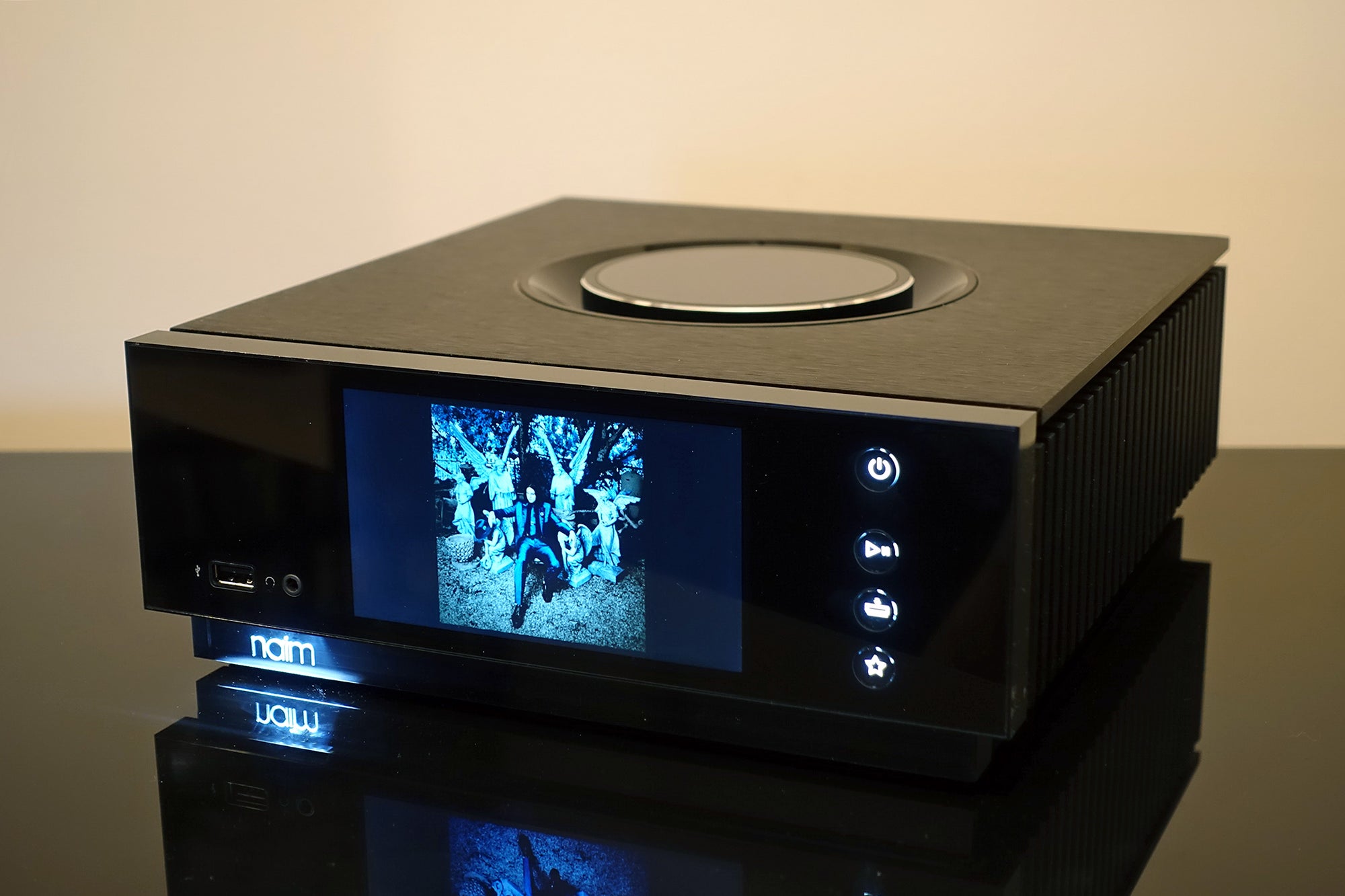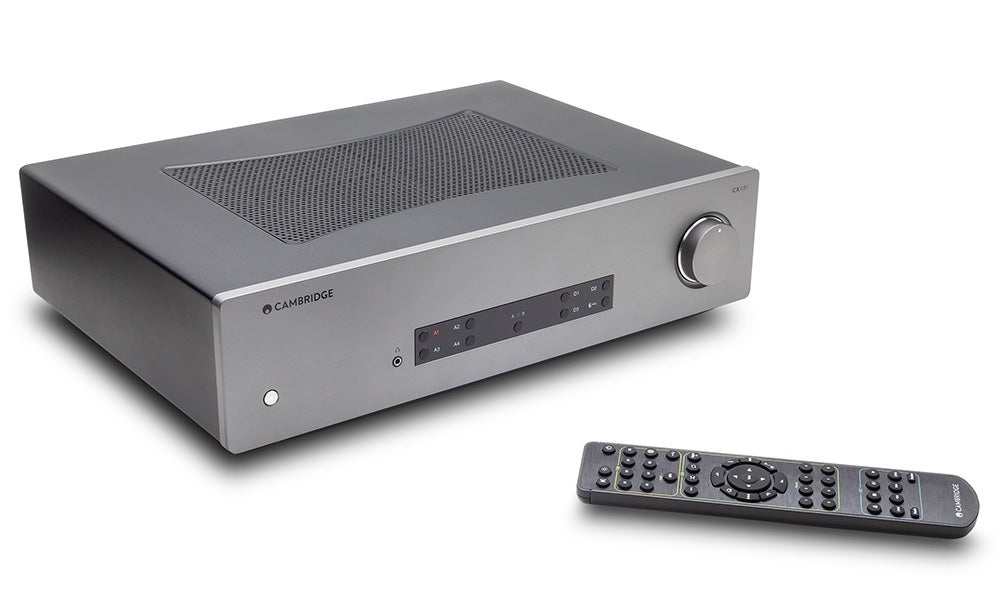Pure Woodland Review
Pure's portable radio/outdoor speaker upends expectations
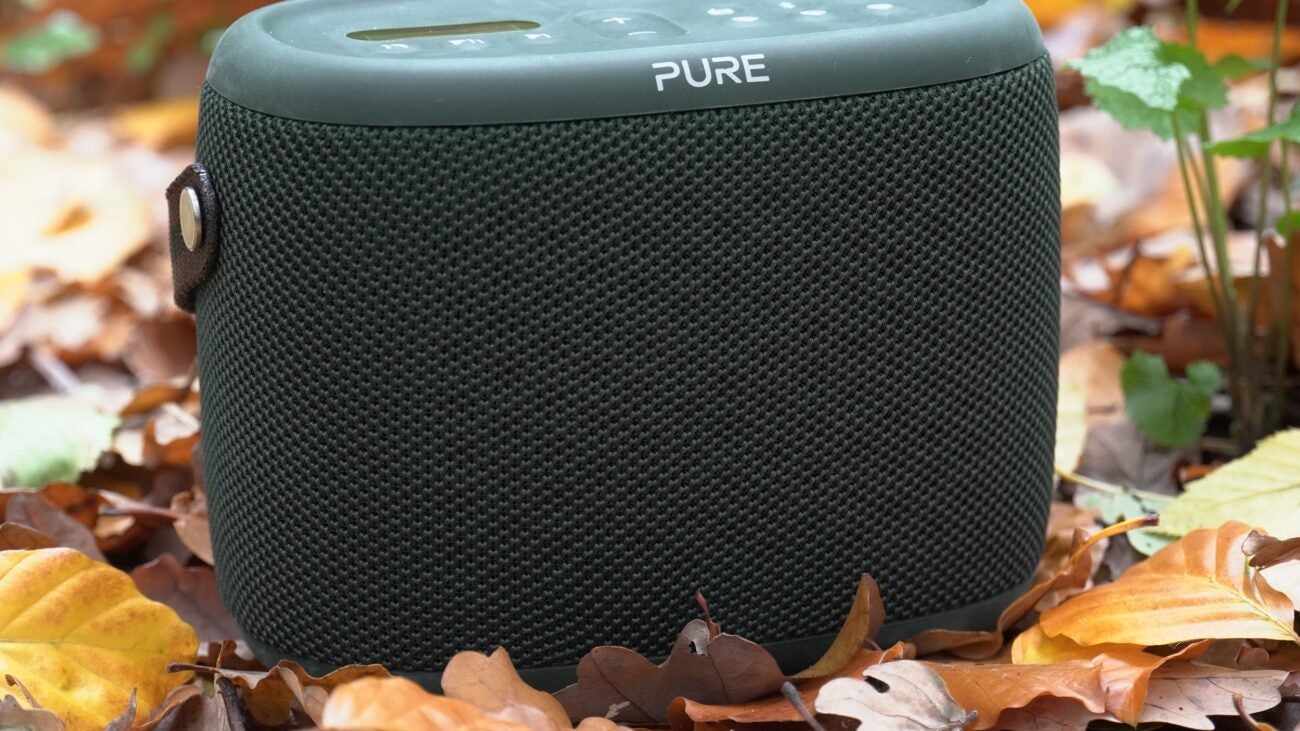
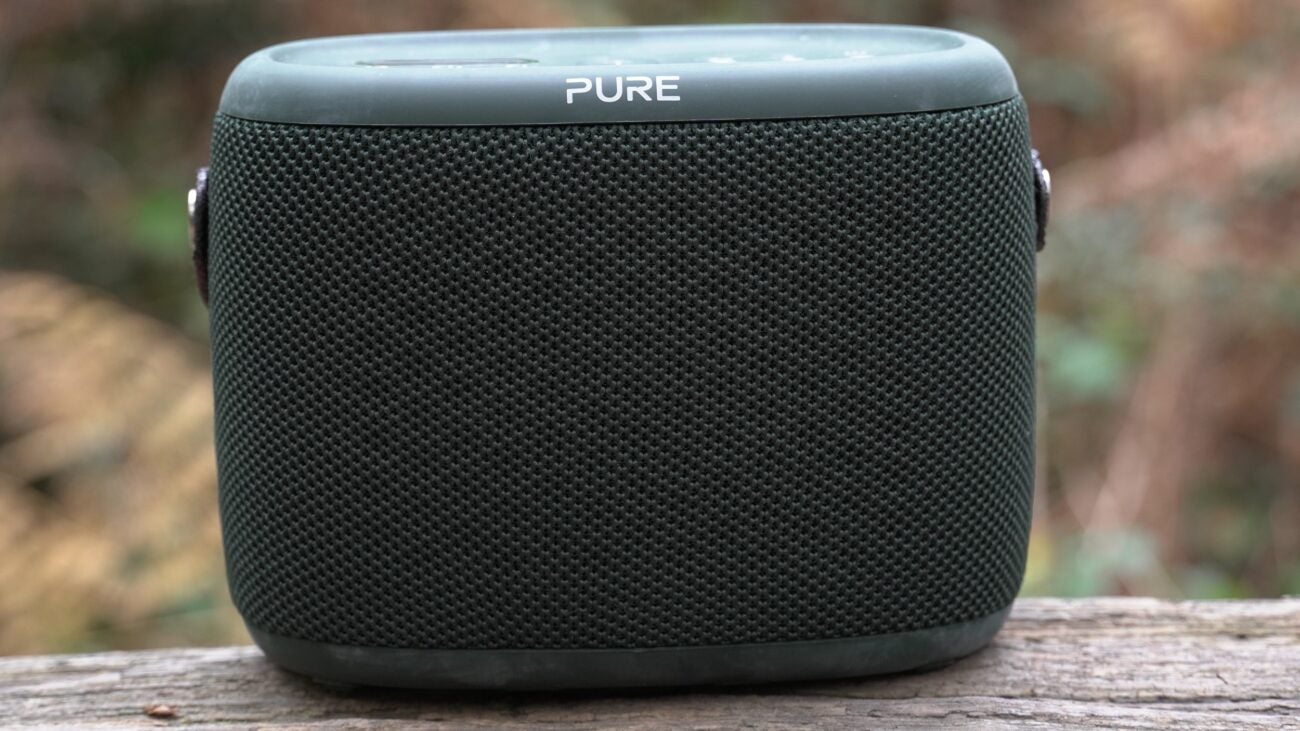
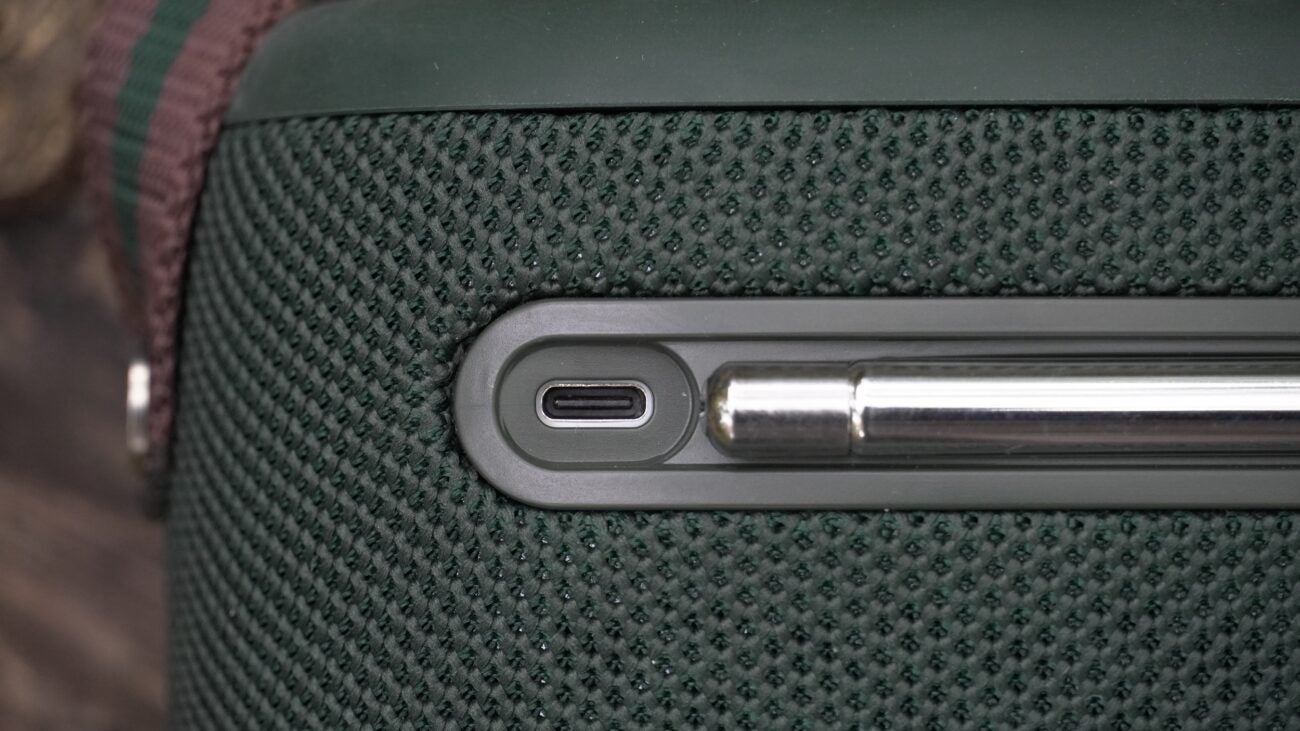
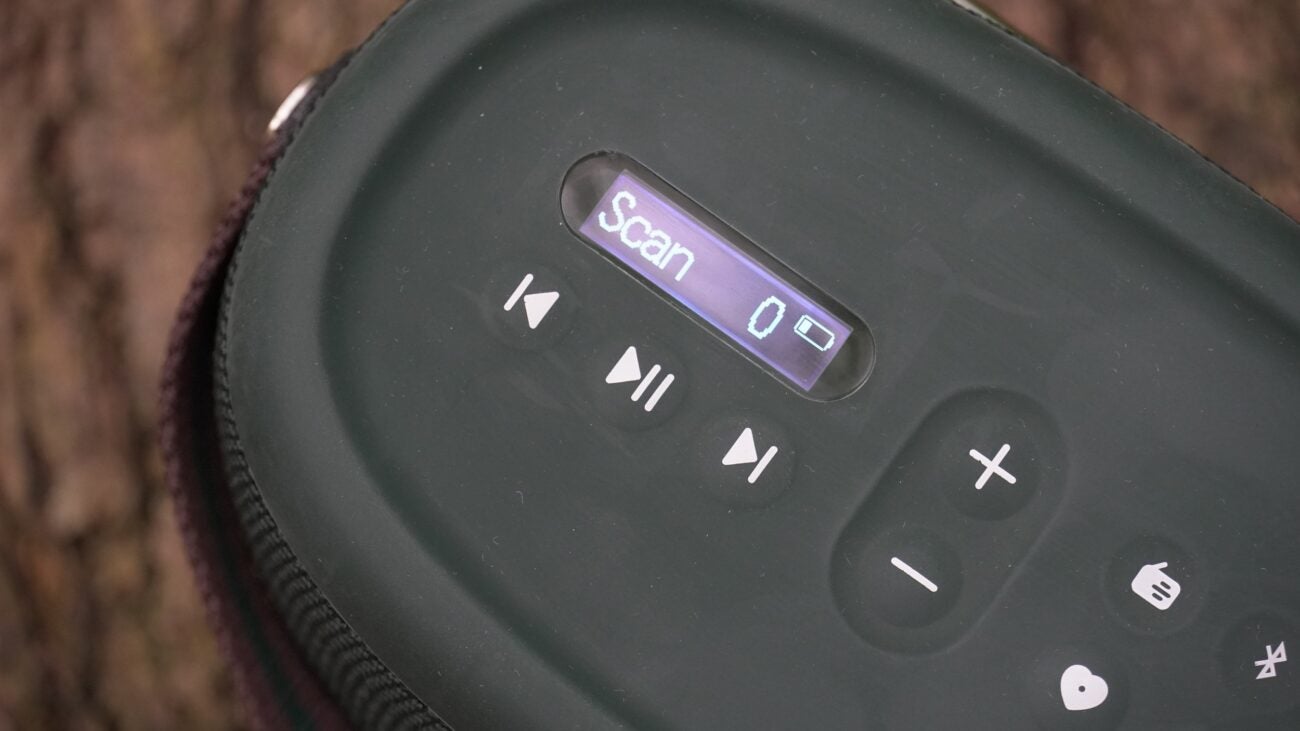
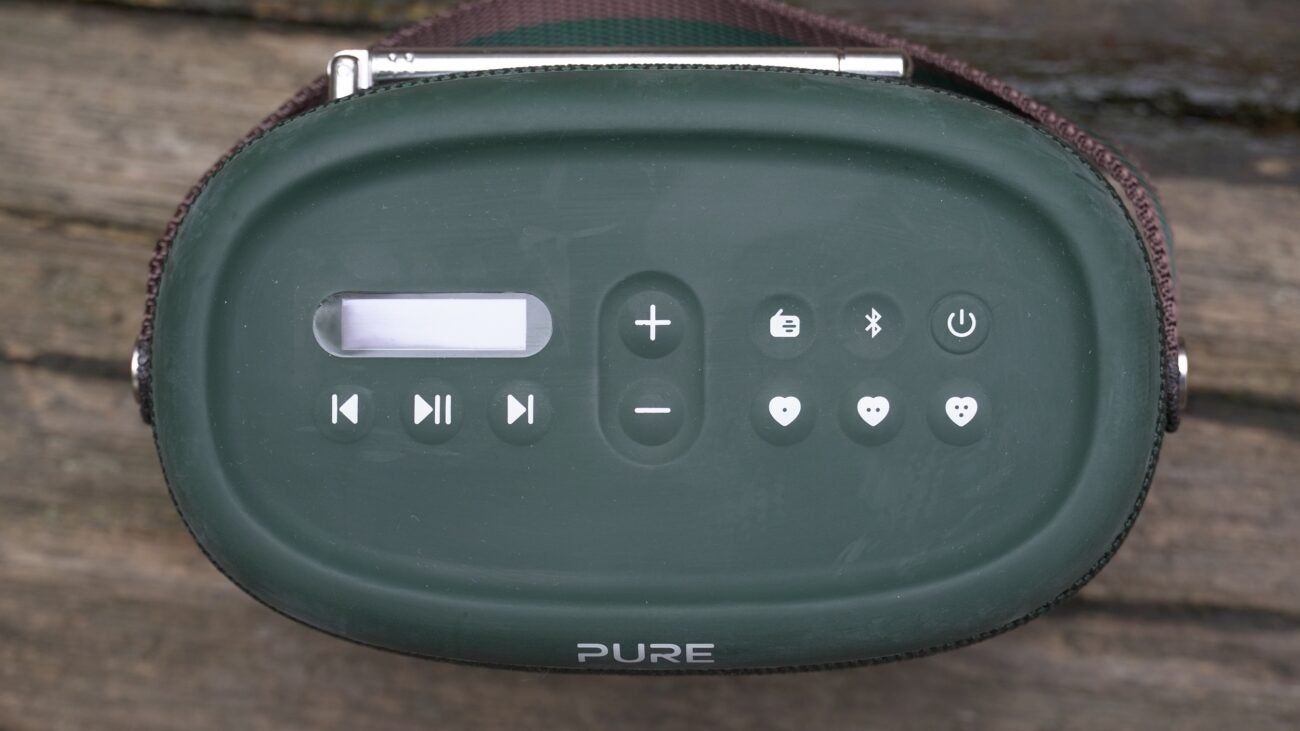

Verdict
An outdoor speaker/radio that’s better than you might expect with its energetic, rich sound. Easy enough to use and with strong build quality, plus features for radio heads, the Pure Woodland competes well against its price rivals.
Pros
- Rich but also crisp delivery
- Rugged build quality
- Radio tuner
- Good Bluetooth performance
Cons
- Slightly confusing preset options
- A little too crisp at higher volumes
- Tiny, not too well positioned screen
Key Features
- TunerDAB+/FM tuner for listening to stations
- Bluetooth 5.1Connect mobile device to listen through Woodland’s speaker
- WaterproofIP67 rating equals water- and dust-proof design
Introduction
If you go down to the woods today, Pure Audio has a nice surprise. The audio brand launched a portable speaker in the Woodland with support for FM/DAB+ and Bluetooth streaming.
Designed and engineered in the UK, the question is whether this is a wireless speaker that can play radio, or a radio that can be used outdoors.
Figuring out the answer to that question may determine whether you give this speaker a closer look, but whichever viewpoint you want to look at the Pure Woodland from, it’s an unexpectedly good wireless speaker/radio.
Design
- Rugged construction
- Strap handle for carry
- Small, slightly impractical display
Given the aesthetics of Pure’s Evoke line-up, the Woodland matches it by keeping things relatively simple – arguably even a little boring.
There’s not much flash, if any, about how the Woodland looks; but take it out into the woods and it does feel a part of the environment with its forest green finish.
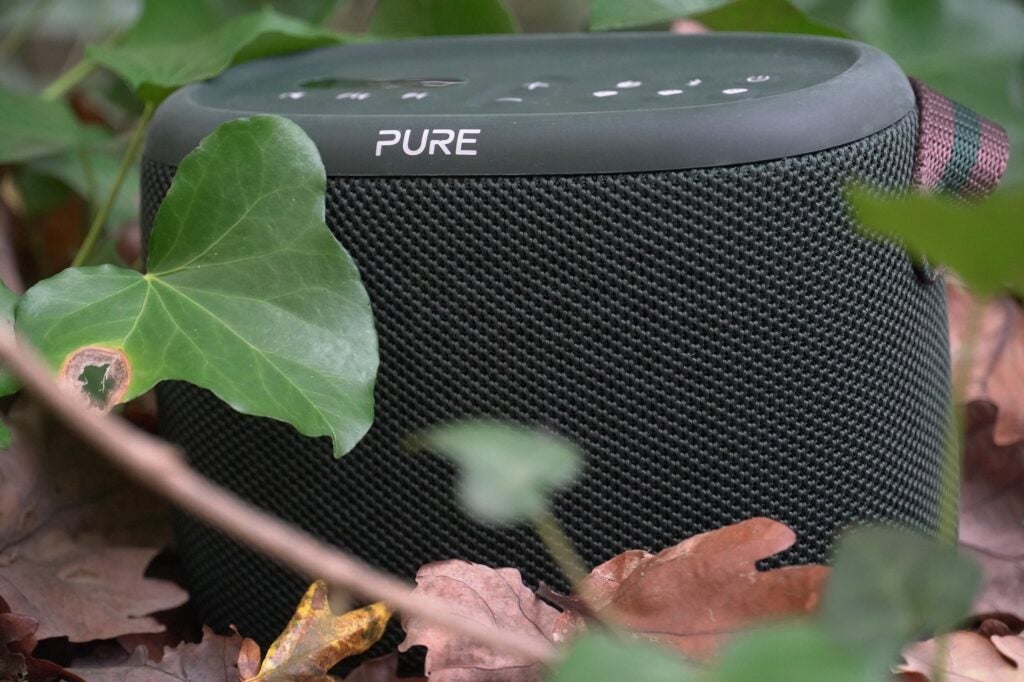
It’s suitably rugged too, the top surface made from hard, rubberised plastic, as is the underside, and sandwiched between the two is a fabric material that covers the speaker’s drivers. At IP67, the speaker is water- and dustproof, which should be enough to survive wet weather.
The buttons on the top surface are easy to distinguish between, some are slightly recessed, others protrude from the surface. Buttons cover playback, skipping/navigation, volume, presets, Bluetooth pairing, power, and swapping between radio modes. Hitting the play button in radio mode mutes audio (leave it unmuted and the radio eventually turns off). Holding the skip button scrolls through the stations faster. It’s all fairly intuitive and easy to pick up.
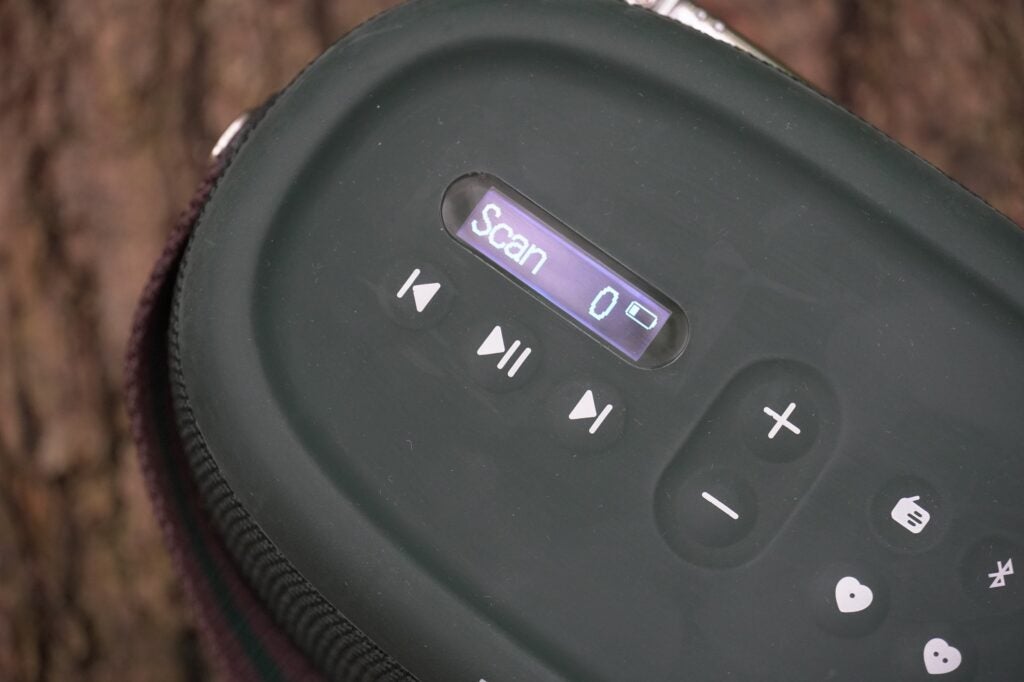
The 128 x 32 dot matrix backlit display is tiny, and not easily addressed unless you’re hovering over. While it’s bright there’s not much information to be gleaned on the screen aside from the station, signal strength, and battery level. To be honest, the screen is not an aspect I’ve relied much on in my time with the Woodland. There’s not much functionality that it offers, but what’s provided is fine enough.
There’s a strap for carrying the speaker, and at 700g, the Woodland feels lighter than I’d expected. Around the back is the radio antenna and next to it is a USB-C port to charge the Woodland.
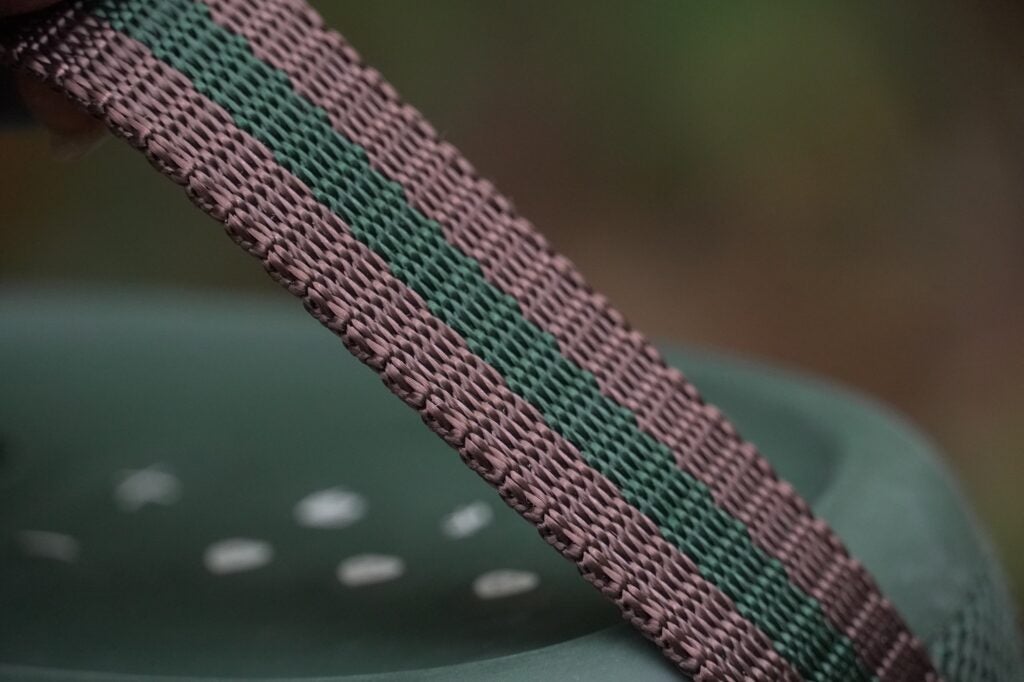
Features
- Six preset options
- Bluetooth 5.1 support
- Up to 14 hours battery life
Let’s look at the presets, which could be a slightly confusing area for some to understand. Pure says the Woodland has six presets, which is correct, and they are divided between three preset buttons. Where it gets awkward is that a button equals one DAB+ and one FM preset – it’s not a case of having six presets available purely for DAB+ or vice versa for FM.
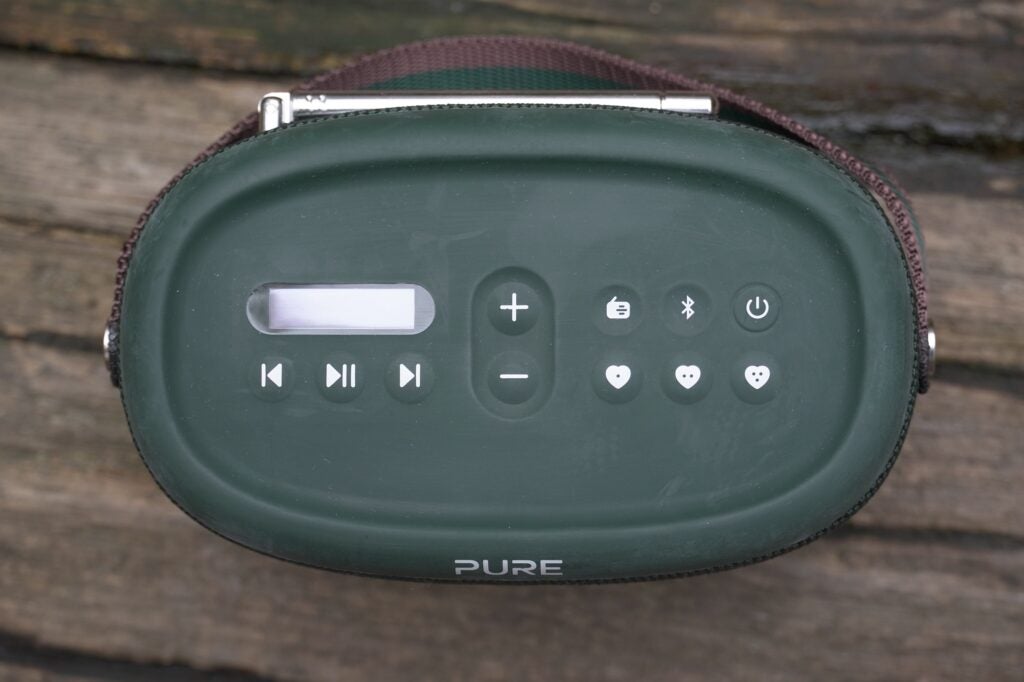
As I’ve tried, once you’ve set a preset for DAB+ radio, if you try to assign another to the same preset it will overwrite the original. You can only have a max of three DAB+ and three FM presets. That’s something you’ll need to bear in the back of your mind about how the Woodland’s presets operate.
The Woodland supports Bluetooth 5.1 (no mention of the codec it streams in), and connection is simple enough through the Bluetooth button. Press it when the speaker is in its radio mode, and it’ll pair with the last known device. There’s no Party mode to join with other speakers – it’s designed to operate on its own.
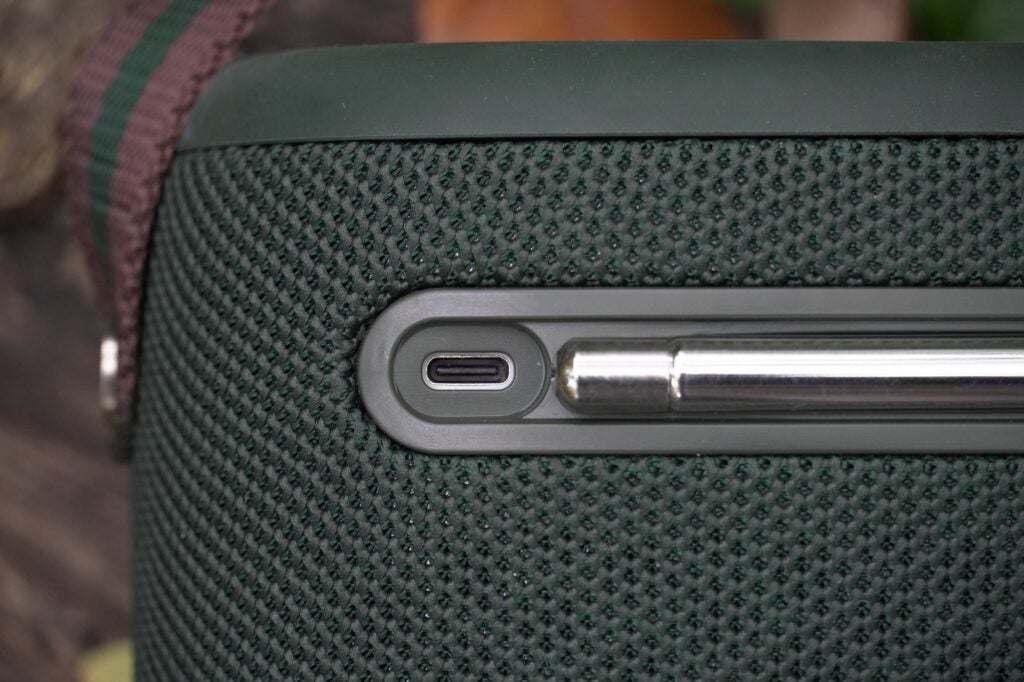
Battery life is said to be up to 14 hours on a single charge. Pure mentions that it was measured at volume 4 when listening to a radio station.
Radio stations include DAB+ and FM, of course, though I’ve found that access to radio stations can drop in and out depending on reception. Scrolling through the stations, some of the BBC stations were missing (Radio 5 Live, Radio 5 Sports X) but popped up again later.
Sound Quality
- Rich bass
- Clear, open midrange
- Can sound a little too crisp at higher volumes
I wasn’t sure what to expect from the Woodland’s audio. It’s both a radio and wireless speaker, and while the two are closely linked, they also have slightly different requirements. Radios almost expressly focus on the spoken voice, while wireless speakers have to meet the needs of communicating the entirety of the frequency range.
Pure describes the performance as rich, and there is a degree of that warmth at lower volumes. But raise the volume up, and the Woodland becomes a slightly different beast.
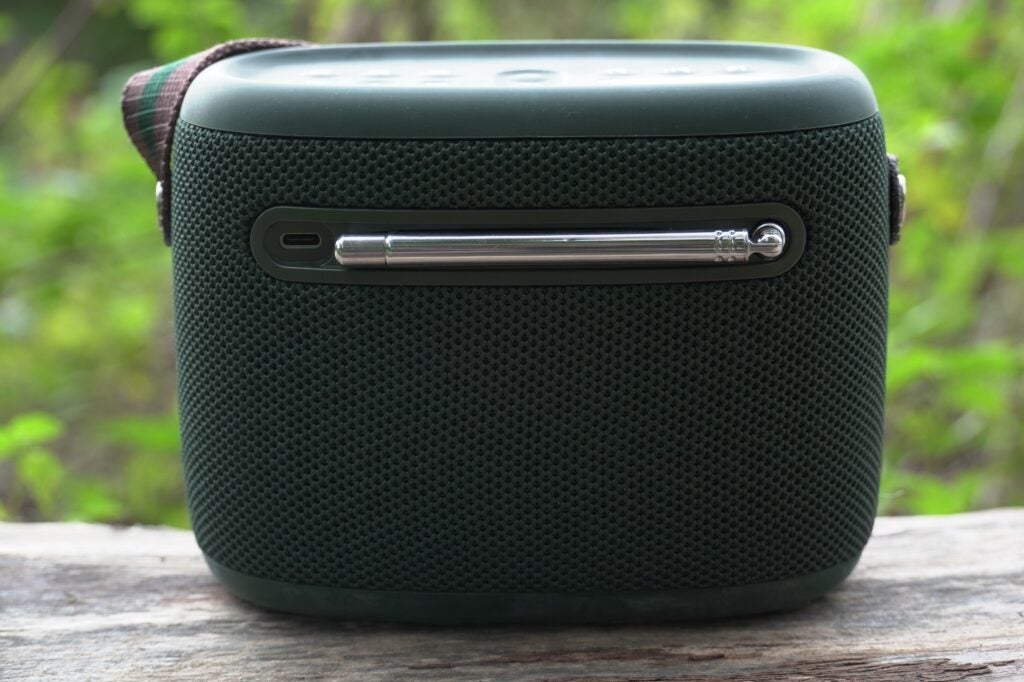
Starting with a listen of Teddy Swim’s Lose Control on BBC Radio 2, and the Pure Woodland carries a rich sense of bass, a performance with vocals that gets the character of his voice. All the sweeping undulations and soaring moments are reproduced quite well.
The soundstage is as big as the width of the speaker, but music doesn’t feel too congested. When commentators are chatting, the warmth of the speaker comes through more obviously, with a smoothness and weight to what’s said. The Woodland – at least at lower volumes – avoids the midrange crispness of ‘indoor’ radios such as the Groov-e Zeus.
Switching to Jazz FM, there’s a rich sense of expression to the trumpets in the Ezra Collective’s Footprints. The speaker retrieves enough detail to describe the high notes of the piano with decent sharpness. I find it a very engaging listen with its warm sound.
And when you raise the volume, the speaker becomes a slightly different proposition – one that I liked but I’d wager some may find iffy. At higher volumes, the midrange sounds crisper and leaner.
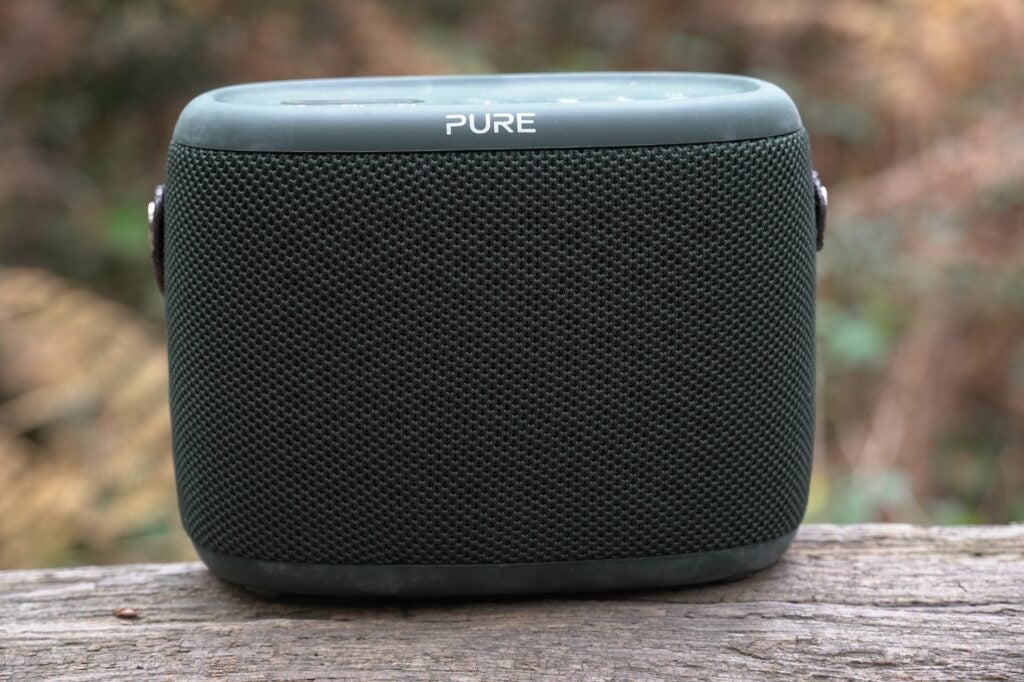
It could be that this 10W Mono speaker sounds a little strained – perhaps even thinner – at higher volumes, but I feel it works in its favour more often than it does not. It doesn’t change its character when listening over Bluetooth or needs an extra helping of volume in its Bluetooth mode like some radios do.
In Vanessa Carlton’s A Thousand Miles there’s a crispness to the cymbal crashes and punchiness delivered to the drumbeats – so the Woodland is not all about being a smooth operator. The chimes register as bright and sharp so it’s able to dig out detail in the upper frequencies than slather them with smoothness.
With Montara’s Blue Lab Beats the speaker describes the trebles of the vibraphone with clarity and brightness that surprises me a little. The bass is firm, punchy, and rich but doesn’t distract away from the good work in retrieving detail from the higher frequencies.
With Lianne La Havas’ Bittersweet, the Woodland absolutely belts out her voice with all the dynamism and reach it can muster for a clear, detailed, and energetic performance. There are times where its energy gets the better of it – The Comet is Coming’s Summon the Fire is crisply delivered to the point of being harsh. In which case a nudge down on the volume is needed.
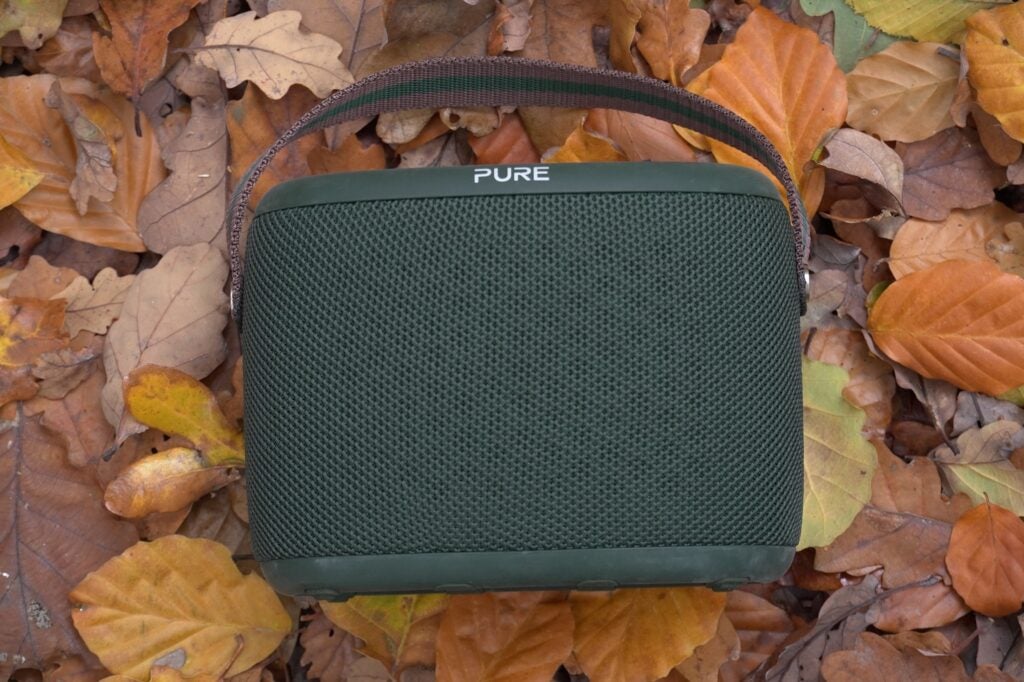
Compared to the similarly priced Marshall Emberton II, the Pure Woodland conveys more attack: it’s a bigger, more open, and direct sound, clearer throughout the frequency range whereas the Emberton II sounds sanded off with its smoother approach. With Metronomy’s The Look it keeps a good rhythm with the track’s beat, the midrange is clearer and there’s good variation to its bass. It’s a more fluent-sounding wireless speaker.
Granted, the Woodland has some rough edges. Push the volume too high and it can sound coarse. The speaker cabinet can rattle with bass distortion when playing a few tracks such as La Havas’ Bittersweet and Kanye West’s Good Morning.
Where there’s audio noise in a stream, the Woodland does little to strip it out, and there are times where the speaker seems slightly bamboozled by what it’s playing, going more for power and heft than clarity. It can go fairly loud in an outdoor setting, but the JBL Charge 5 is a better consideration if loud music is what you want.
That said, I liked this wireless speaker/radio more than I thought I would after powering on. Indoors or out, the Pure Woodland produces an engaging sound up there with its price rivals.
Latest deals
Should you buy it?
If you want a portable radio that’s a wireless speaker
In the past, I’ve found the Bluetooth performance of radios to disappoint. That’s not the case with Woodland which sounds consistently good with Bluetooth audio.
You want a more refined-sounding speaker
The Woodland is a little rough around the edges, a little too crisp at higher volumes, some bass distortion here and there. There are caveats to its sprightly performance.
Final Thoughts
A radio that’s a wireless speaker or vice versa – it doesn’t really matter in the final accounts as the Pure Woodland is good at both. The audio performance is both rich and clear, with a good vocal performance; and as an outdoor speaker its tough, rugged build quality will help it survive most inclement weather or water-related mishaps.
The price initially seemed expensive, but up against rivals such as the Marshall Emberton II, JBL Charge 5, and even the Sonos Roam SL, the Pure Woodland puts up a good fight. The radio features add something different, and it is well worth putting on your shortlist if you’re after an outdoor speaker come rain or shine. Check out our Best DAB Radio and Best Bluetooth Speaker lists for more options.
How we test
We test every outdoor speaker we review thoroughly over an extended period of time. We use industry standard tests to compare features properly. We’ll always tell you what we find. We never, ever, accept money to review a product.
Find out more about how we test in our ethics policy.
Tested across a month
Tested with real world use
FAQs
The Woodland speaker only outputs in mono, with no stereo support.



